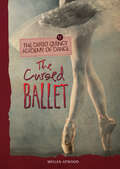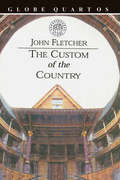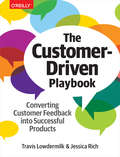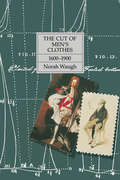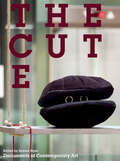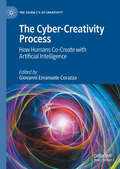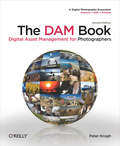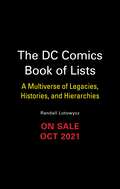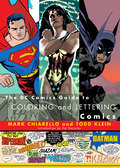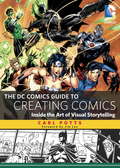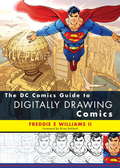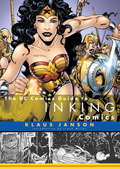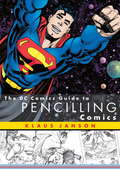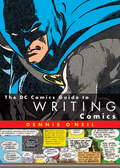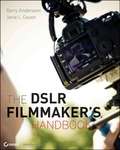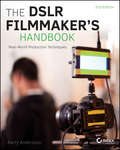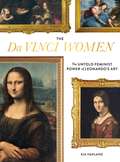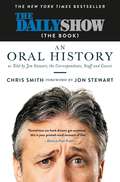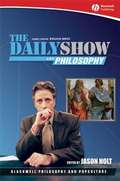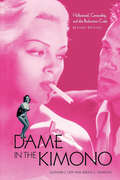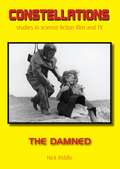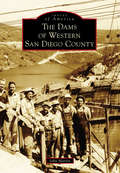- Table View
- List View
The Cursed Ballet (The\dario Quincy Academy Of Dance Ser. #3)
by Megan AtwoodEvery time the Dario Quincy Academy has performed Giselle, the ballet's lead dancer has died. That's what the rumors say, anyway. But Ophelia doesn't believe in all that. She's determined to win the lead and beat the so-called curse. As Ophelia begins sneaking out at night to practice Giselle's moves, she meets a mysterious boy hiding in the shadows. He's got great moves, and his looks aren't bad either. After a series of secret meetings, Ophelia starts to feel drained of her strength. She even blacks out during dance class. Is she just pushing herself too hard? Or are the boy and the curse connected?
The Custom of the Country: The Custom Of The Country. Elder Brother. Spanish Curate. Wit Without Money. Beggars' Bush (Globe Quartos)
by John FletcherFirst Published in 1999. Routledge is an imprint of Taylor & Francis, an informa company.
The Customer-Driven Playbook: Converting Customer Feedback into Successful Products
by Travis Lowdermilk Jessica RichDespite the wide acceptance of Lean approaches and customer-development strategies, many product teams still have difficulty putting these principles into meaningful action. That’s where The Customer-Driven Playbook comes in. This practical guide provides a complete end-to-end process that will help you understand customers, identify their problems, conceptualize new ideas, and create fantastic products they’ll love.To build successful products, you need to continually test your assumptions about your customers and the products you build. This book shows team leads, researchers, designers, and managers how to use the Hypothesis Progression Framework (HPF) to formulate, experiment with, and make sense of critical customer and product assumptions at every stage. With helpful tips, real-world examples, and complete guides, you’ll quickly learn how to turn Lean theory into action.Collect and formulate your assumptions into hypotheses that can be tested to unlock meaningful insightsConduct experiments to create a continual cadence of learningDerive patterns and meaning from the feedback you’ve collected from customersImprove your confidence when making strategic business and product decisionsTrack the progression of your assumptions, hypotheses, early ideas, concepts, and product features with step-by-step playbooksImprove customer satisfaction by creating a consistent feedback loop
The Cut of Men's Clothes: 1600-1900
by Norah WaughThis book traces the evolution of the style of men's dress through a sequence of diagrams accurately scaled down from patterns of actual garments, many of them rare museum specimens. The plates have been selected with the same purpose. Some are photographs of suits for which diagrams have also been given; others, reproduced from paintings and old prints, show the costume complete with its accessories. Quotations from contemporary sources--from diaries, travelers' accounts and tailors' bills--supplement Norah Waugh's text with comments on fashion and lively eyewitness descriptions.
The Cute (Whitechapel: Documents of Contemporary Art)
by Sianne NgaiA collection that tracks the astonishing impact of one vernacular aesthetic category—the cute—on postwar and contemporary art.The Cute tracks the astonishing impact of a single aesthetic category on post-war and contemporary art, and on the vast range of cultural practices and discourses on which artists draw. From robots and cat videos to ice cream socials, The Cute explores the ramifications of an aesthetic &“of&” or &“about&” minorness—or what is perceived to be diminutive, subordinate, and above all, unthreatening—on the shifting forms and contents of art today. This anthology is the first of its kind to show how contemporary artists have worked on and transformed the cute, in ways that not only complexify its meaning, but also reshape their own artistic practices. Artists surveyed includePeggy Ahwesh, Cosima Von Bonin, Nayland Blake, Paul Chan, Adrian Howells, Juliana Huxtable, Larry Johnson, Mike Kelley, Dean Kenning, Wyndham Lewis, Jeff Koons, Sean-Kierre Lyons, Mammalian Diving Reflex, Alake Shilling, Annette Messager, Mariko Mori, Takashi Murakami, Charlemagne Palestine, David Robbins, Mika Rottenberg, Allen Ruppersberg, Jack Smith, Kara Walker, Andy Warhol, Yoshitomo NaraWriters include Sasha Archibald, Roland Barthes, Leigh Claire La Berge, Lauren Berlant, Ian Bogost, Jennifer Doyle, Lee Edelman, Adrienne Edwards, Lewis Gordon, Rosemarie Garland-Thompson, Stephen Jay Gould, Lori Merish, John Morreall, Juliane Rebentisch, Frances Richard, Carrie Rickey, Friedrich Schiller, Peter Schjeldahl, Kanako Shiokawa, Angelik Vizcarrondo-Laboy, Kevin Young
The Cyber-Creativity Process: How Humans Co-Create with Artificial Intelligence (The Seven C’s of Creativity)
by Giovanni Emanuele CorazzaThis edited book explores the process of creating using the seven C's of creativity framework. It discusses the creative process as a collaboration between humans and Artificial Intelligence (AI), here identified as the cyber-creativity process. Through nine chapters written by leading scholars in the field, this collection delves into the rapidly emerging area of Generative-AI (Gen-AI) applications and sheds light on the parts of the creative process that will remain fundamentally human throughout the foreseeable future, as well as those that will benefit more from AI-augmentation. Drawing on the dynamic definition of creativity, the contents encompass the Dynamic Universal Creative Process (DUCP) and the DA VINCI model, the design principles of Gen-AI algorithms, the cyber-creativity process in education, journalism, design, fashion, music, and its implications on intellectual property protection. A timely reflection on the complex and evolving relation between creativity and technology, this volume will interest academics, researchers, and students alike across humanities, social and hard sciences.
The Cylinder: Kinematics of the Nineteenth Century (FlashPoints)
by Helmut Müller-SieversThe Cylinder investigates the surprising proliferation of cylindrical objects in the nineteenth century, such as steam engines, phonographs, panoramas, rotary printing presses, silos, safety locks, and many more. Examining this phenomenon through the lens of kinematics, the science of forcing motion, Helmut Müller-Sievers provides a new view of the history of mechanics and of the culture of the industrial revolution, including its literature, that focuses on the metaphysics and aesthetics of motion. Müller-Sievers explores how nineteenth-century prose falls in with the specific rhythm of cylindrical machinery, re-imagines the curvature of cylindrical spaces, and conjoins narrative progress and reflection in a single stylistic motion. Illuminating the intersection of engineering, culture, and literature, he argues for a concept of culture that includes an epoch’s relation to the motion of its machines.
The DAM Book: Digital Asset Management for Photographers (O'reilly Ser.)
by Peter KroghOne of the main concerns for digital photographers today is asset management: how to file, find, protect, and re-use their photos. The best solutions can be found in The DAM Book, our bestselling guide to managing digital images efficiently and effectively. Anyone who shoots, scans, or stores digital photographs is practicing digital asset management (DAM), but few people do it in a way that makes sense. In this second edition, photographer Peter Krogh -- the leading expert on DAM -- provides new tools and techniques to help professionals, amateurs, and students: Understand the image file lifecycle: from shooting to editing, output, and permanent storage Learn new ways to use metadata and key words to track photo files Create a digital archive and name files clearly Determine a strategy for backing up and validating image data Learn a catalog workflow strategy, using Adobe Bridge, Camera Raw, Adobe Lightroom, Microsoft Expression Media, and Photoshop CS4 together Migrate images from one file format to another, from one storage medium to another, and from film to digital Learn how to copyright images To identify and protect your images in the marketplace, having a solid asset management system is essential. The DAM Book offers the best approach.
The DC Book of Lists: A Multiverse of Legacies, Histories, and Hierarchies
by Randall LotowyczPacked with 100+ inventive groupings, hierarchies, and infographics, The DC Comics Book of Lists offers a creative way of looking at both the well-known and obscure histories of the top heroes and villains from the DC Universe across 80+ years. Each entry in this book celebrates another corner of DC's past, present, and future. It revels in the rich tapestry of DC's characters and history. Or histories, for that matter. Each first meeting of Batman and Superman is listed, as are highlights of Hawkman's many reincarnations and Jimmy Olsen's amusing and peculiar transformations. Harley Quinn&’s most peculiar career choices? They make quite a resume. The DC Comics Book of Lists also has a chronological list of artificial intelligence, from the 2nd century to the 823rd—with Metal Men, Brother Eye, and Computo along the way—and a Mount Olympus family tree presents Wonder Woman&’s expansive list of relatives. Legacy characters like the Flash and Green Lantern are highlighted, profiling each character to don the mantle, and Suicide Squad members are memorialized in a breakdown of who was killed on each mission. From superheroes and villains with tattoos to the many cats prowling around the DC multiverse, you&’ll find a surprise or two on every page.Illustrated with full-color comic book art throughout, each page of The DC Comics Book of Lists presents a new discovery or way of looking at cherished characters.
The DC Comics Guide to Coloring and Lettering Comics
by Todd Klein Mark ChiarelloAcclaimed artists Mark Chiarello and Todd Klein demystify these essential steps in traditional graphic storytelling. Chiarello explains the entire coloring process, from computer and software choice to creating color effects that give the action its maximum impact. Klein discusses whether to letter by hand or by computer--a hotly debated topic among working letterers--and demonstrates an array of techniques for creasting word balloons, fonts, logos, and much more.
The DC Comics Guide to Creating Comics
by Jim Lee Carl PottsThe most exciting and comprehensive book yet in the bestselling DC Comics how-to-draw series. From the bestselling DC Comics Guide series, this is the essential resource for aspiring comics creators looking to make intriguing, action-packed comics like the experts at DC Comics. Going beyond the typical art and writing lessons, this book shows readers how to take full advantage of comics' sequential visual storytelling possibilities. With examples direct from DC Comics, featuring their best creators and classic superheroes like Batman, Superman, and the rest of the Justice League, it presents key principles and techniques for crafting exciting professional-quality comics. This behind-the-curtain look at the DC Comics creative process is a can't-miss opportunity for aspiring comics creators, whether they want to work for DC Comics or invent their own unique comics creations.
The DC Comics Guide to Digitally Drawing Comics
by Freddie E Williams Brian BollandAt last-the first guide to drawing comics digitally! Artists! Gain incredible superpowers...with the help of your computer! The DC Comics Guide to Digitally Drawing Comics shows how to give up pencil, pen, and paper and start drawing dynamic, exciting comics art entirely with computer tools. Author Freddie E Williams is one of DC Comics' hottest artists and a leader in digital penciling and inking-and here, in clear, step-by-step directions, he guides readers through every part of the digital process, from turning on the computer to finishing a digital file of fully inked comic art, ready for print. Creating a template, sketching on the computer, penciling, and finally inking digitally are all covered in depth, along with bold, timesaving shortcuts created by Williams, tested by years of trial and error. Step into the digital age, streamline the drawing process, and leap over the limitations of mere physical drawing materials with The DC Guide to Digitally Drawing Comics.From the Trade Paperback edition.
The DC Comics Guide to Inking Comics
by Klaus Janson Frank MillerFor the aspiring artist who wants to become an expert comic book inker, The DC Comics Guide to Inking Comics is the definitive, one-stop resource!America's leading comic book publisher brings its superstar creators and classic characters to the third in an authoritative series of books on how to create comics. Legendary comic book inker Klaus Janson uses DC's world-famous characters--including Batman, Superman, and Wonder Woman--to demonstrate an array of inking techniques, covering such topics as using textures, varying line weights, creating the illusion of three-dimensionality, and working with light and dark. Janson's lively, step-by-step instructions are informative, exciting--and clear enough for even beginners to follow. In addition, every technique shown in this guide conforms to actual industry standards. The perfect how-to on everything from basic inking materials to storytelling techniques, this one-stop sourcebook is packed with a wealth of tested techniques, practical advice, and professional secrets for the aspiring comic artist.
The DC Comics Guide to Pencilling Comics
by Klaus JansonAmerica's leading comic book publisher brings its superstar creators and classic characters to the second in an authoritative series of books on how to create comics. The art of Klaus Janson has endured in the ever-changing comic book industry for over 30 years. Now this talented artist brings that experience to the most critical step of effective comic book storytelling: pencilling.Covering everything from anatomy to composition to page design, Janson details the methods for creating effective visual communication. Step by step, he analyzes and demonstrates surefire strategies for comic book pencilling that are informative and exciting. Using DC's world-famous characters, he illustrates the importance of knowing the fundamentals of art and how best to use them.The DC Comics Guide to Pencilling Comics is packed with a wealth of tested techniques, practical advice, and professional secrets for the aspiring artist. It is a valuable resource for comic book, graphic novel, and storyboard artists everywhere.
The DC Comics Guide to Writing Comics
by Dennis O'NeilFor any writer who wants to become an expert comic-book storyteller, The DC Comics Guide to Writing Comics is the definitive, one-stop resource!In this valuable guide, Dennis O'Neil, a living legend in the comics industry, reveals his insider tricks and no-fail techniques for comic storytelling. Readers will discover the various methods of writing scripts (full script vs. plot first), as well as procedures for developing a story structure, building subplots, creating well-rounded characters, and much more. O'Neil also explains the many diverse formats for comic books, including graphic novels, maxi-series, mega-series, and adaptation. Of course, there are also dozens of guidelines for writing proposals to editors that command attention and get results.
The DIY Movement in Art, Music and Publishing: Subjugated Knowledges (Routledge Research in Cultural and Media Studies)
by Sarah LowndesThis book considers the history of Do It Yourself art, music and publishing, demonstrating how DIY strategies have transitioned from being marginal, to emergent, to embedded. Through secondary research, observation and 30 original interviews, each chapter analyses one of 15 creative cities (San Francisco, Los Angeles, Dusseldorf, New York, London, Manchester, Cologne, Washington DC, Detroit, Berlin, Glasgow, Olympia (Washington), Portland (Oregon), Moscow and Istanbul) and assesses the contemporary situation in each in the post-subcultural era of digital and internet technologies. The book challenges existing subcultural histories by examining less well-known scenes as well as exploring DIY "best practices" to trace a template of best approaches for sustainable, independent, locally owned creative enterprises.
The DSLR Filmmaker's Handbook
by Barry Andersson Janie L. GeyenA how-to guide for getting professional-quality video from your DSLR Shooting HD Video with a video-enabled DSLR has many benefits and some tricky drawbacks that digital filmmakers and videographers can overcome to get professional results. The DSLR Filmmaker's Handbook helps filmmakers harness the HD video capabilities of their DSLRs to create professional-level video. Packed with professionally-tested techniques, this indispensible book serves as a training guide for the complex steps that must be taken before, during, and after filming. Teaches you the key tools and techniques for using your DSLR to shoot high-quality, professional-level video Distills dense information about filmmaking and filters it down to easily understood granules Shows you what to expect and what to avoid with your DSLR and how to maximize the visual look of your film Shares tools and techniques that have been used in real-world, independent movie-making environments The DSLR Filmmaker's Handbook shows you how to overcome any tricky drawbacks that you may face while shooting HD video with your DSLR.
The DSLR Filmmaker's Handbook
by Barry AnderssonLearn to shoot professional-quality HD footage with your DSLR Camera The DSLR Filmmaker's Handbook, 2nd Edition is the expert guide to getting professional movie-making results with an HD video-enabled DSLR camera. Fully updated to reflect the latest technology, this updated edition provides guidance toward best practices and techniques that maximize results. Shooting HD video with a DSLR has many benefits -- and also a few tricky drawbacks -- but this guide gives you the insight and training you need to overcome these challenges as you learn what to anticipate, how to work around it, and how to fix imperfections in post-production. Award winning independent filmmaker Barry Andersson walks you through the shooting process and shows you what to do before, during, and after filming to ensure high quality results. Most of today's DSLRs have the capacity to shoot HD video. This, combined with incredible low-light capabilities, shallow depth of field, and relatively low price point make these cameras an extremely attractive entry point for would-be independent filmmakers. This book shows you how to exploit your DSLR's capabilities to produce beautiful film, with step-by-step expert instruction. Understand the limitations of DSLR video Learn what to plan for before filming begins Exploit HD capabilities to maximize the film's visuals Produce professional-level, film-quality footage With thorough explanations and expert instruction, The DSLR Filmmaker's Handbook, 2nd Edition is the training you need to start shooting beautiful HD footage.
The Da Vinci Notebooks: A Dazzling Array of da Vinci's Celebrated and Inspirational Inventions, Theories, and Observations (Text Connections Ser. #2)
by Emma DickensTowering across time as the creator of the Mona Lisa, forever famous as a sculptor and inventor, Leonardo da Vinci was one of the greatest minds of both the Italian Renaissance and Western civilization. His keen scientific imagination and, most of all, his aesthetic and creative genius have forever changed the course of our culture. Dan Brown's The Da Vinci Code and recent in-depth biographies have stimulated renewed interest in da Vinci and his complex and inquiring intelligence. He is a challenging figure easily defined only by his great works, but this revealing selection of sketches, diagrams, and writings from his notebooks is a beautiful and varied record of da Vinci's theories and observations. They embrace not only art but also architecture, town planning, engineering, naval warfare, music, medicine, mathematics, science, and philosophy. The notebooks-a treasure trove of unparalleled ingenuity, curiosity, and creative energy-have inspired readers for centuries. The Da Vinci Notebooks is the perfect introduction to the mysteries of a master artist.
The Da Vinci Women: The Untold Feminist Power of Leonardo's Art
by Kia VahlandThis new biographical look at Leonardo da Vinci explores the Renaissance master's groundbreaking portrayal of women which forever changed the way the female form is depicted. Leonardo da Vinci was a revolutionary thinker, artist, and inventor who has been written about and celebrated for centuries. Lesser known, however, is his revolutionary and empowering portrayal of the modern female centuries before the first women's liberation movements. Before da Vinci, portraits of women in Italy were still, impersonal, and mostly shown in profile. Leonardo pushed the boundaries of female depiction having several of his female subjects, including his Mona Lisa, gaze at the viewer, giving them an authority which was withheld from women at the time. Art historian and journalist Kia Vahland recounts Leonardo's entire life from April 15, 1452, as a child born out of wedlock in Vinci up through his death on May 2, 1519, in the French castle of von Cloux. Included throughout are 80 sketches and paintings showcasing Leonardo's approach to the female form (including anatomical sketches of birth) and other artwork as well as examples from other artists from the 15th and 16th centuries. Vahland explains how artists like Raphael, Giorgione, and the young Titan were influenced by da Vinci's women while Michelangelo, da Vinci's main rival, created masculine images of woman that counters Leonardo's depictions.
The Daily Show (The Book): An Oral History as Told by Jon Stewart, the Correspondents, Staff and Guests
by Jon Stewart Chris Smith<P>The complete, uncensored history of the award-winning The Daily Show with Jon Stewart, as told by its correspondents, writers, and host. <P>For almost seventeen years, The Daily Show with Jon Stewart brilliantly redefined the borders between television comedy, political satire, and opinionated news coverage. It launched the careers of some of today's most significant comedians, highlighted the hypocrisies of the powerful, and garnered 23 Emmys. Now the show's behind-the-scenes gags, controversies, and camaraderie will be chronicled by the players themselves, from legendary host Jon Stewart to the star cast members and writers-including Samantha Bee, Stephen Colbert, John Oliver, Steve Carell, Lewis Black, Jessica Williams, John Hodgman, and Larry Wilmore-plus some of The Daily Show's most prominent guests and adversaries: John and Cindy McCain, Glenn Beck, Tucker Carlson, and many more. <P>This oral history takes the reader behind the curtain for all the show's highlights, from its origins as Comedy Central's underdog late-night program hosted by Craig Kilborn to Jon Stewart's long reign to Trevor Noah's succession, rising from a scrappy jester in the 24-hour political news cycle to become part of the beating heart of politics-a trusted source for not only comedy but also commentary, with a reputation for calling bullshit and an ability to effect real change in the world. <P>Through years of incisive election coverage, Jon Stewart's emotional monologue in the wake of 9/11, his infamous confrontation on Crossfire, passionate debates with President Obama and Hillary Clinton, feuds with Bill O'Reilly and Fox, the Indecisions, Mess O'Potamia, and provocative takes on Wall Street and racism, The Daily Show has been a cultural touchstone. Now, for the first time, the people behind the show's seminal moments come together to share their memories of the last-minute rewrites, improvisations, pranks, romances, blow-ups, and moments of Zen both on and off the set of one of America's most groundbreaking shows. <P><b>A New York Times Bestseller</b>
The Daily Show and Philosophy: Moments of Zen in the Art of Fake News
by Jason HoltThis book brings together nineteen essays on the many moments of Zen to be found in the artful humor of The Daily Show and The Colbert Report.
The Dame in the Kimono: Hollywood, Censorship, and the Production Code
by Leonard J. Leff Jerold L. Simmons“This excellent, lively study examines the ‘raucous debate’ sparked by the Code over the morals and ideals of American movies.” —Publishers WeeklyThe new edition of this seminal work takes the story of the Production Code and motion picture censorship into the present, including the creation of the PG-13 and NC-17 ratings in the 1990s.Starting in the early 1930s, the Production Code Director, Joe Breen, and his successor, Geoff Shurlock, understood that American motion pictures needed enough rope—enough sex, and violence, and tang—to lasso an audience, and not enough to strangle the industry. To explore the history and implementation of the Motion Picture Production Code, this book uses 11 movies: Dead End, GoneWith the Wind, The Outlaw, The Postman Always Rings Twice, The Bicycle Thief, Detective Story, A Streetcar Named Desire, The Moon Is Blue, The French Line, Lolita, and Who’s Afraid of Virginia Woolf? The authors combine a lively style with provocative insights and a wealth of anecdotes to show how the code helped shape American screen content for nearly 50 years.“A readable, intimate account of the rise to near-tyrannical power, and the fall to well-deserved ignominy, of the old Production Code Administration.” —Atlantic Monthly“A valuable insight into our own innocence and naiveté.” —The New York Times Book Review“The triumph of Leff and Simmons’s fine work is that they have reminded us of how fatuous and inimical a code of conduct can be: how tempting it is as a theoretical answer, and how intrinsically flawed it is as a working solution.” —The Times of London
The Damned (Constellations)
by Nick RiddleThe Damned (1963) is the most intriguing of director Joseph Losey’s British "journeyman" films. A sci-fi film by a director who hated sci-fi; a Hammer production that sat on the shelf for over two years before being released with almost no publicity as the second half of a double bill. Losey was a director vocal in his dislike of depictions of physical violence, but he often made films that radiate an energy produced by a violent clash of elements. The Damned catches a series of collisions—some of them inadvertent—and traps them as if in amber. Its volatile elements include Losey the blacklisted director, Hammer the erratic British studio, Oliver Reed the 'dangerous' young actor, and radioactive children. Nick Riddle’s contribution to the Constellations series concentrates on historical and cultural context, place, genre, and other themes in order to try to make sense of a fascinating, underappreciated film.
The Dams of Western San Diego County
by John MartinThe unreliability of the San Diego River compelled the Franciscan fathers to construct the area's first dam in 1813 to conserve drinking and irrigation water for the Mission San Diego de Alcal". This water-driven circumstance continued and expanded in the ensuing American era. Lacking a reliable water source at the turn of the 20th century, San Diego County was destined to experience modest growth. The region's semiarid conditions, cyclical droughts, and existing river systems determined that the only effective way to maintain a ready water supply was to conserve runoff and river floodwaters behind dam-created reservoirs. Between 1888 and 1934, private and municipal interests constructed a series of massive structures that made San Diego County the dam-building center of the world. The county featured some of America's first multiple arch dams and earliest hydraulic fill dams. Into the mid-1940s, dammed reservoirs remained the principle water source for county consumers and made the municipal expansion of the city of San Diego possible.
